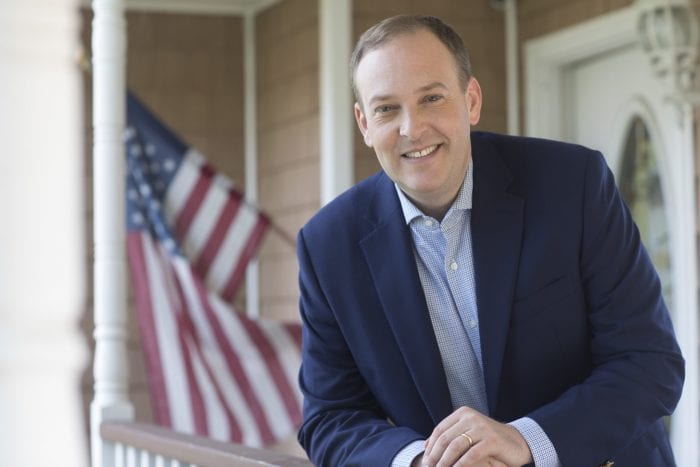William F. Connors Jr., 77, of East Setauket passed away on July 21.

He was born March 31, 1945, in Brooklyn and was the son of the late William and Ethel Connors. He spent the past 50 years married to the love of his life, Susan Connors (Edwards), and together they raised four children: Terence, Corinne Keane (Edward), Kristin Mangini (Ken) and their daughter Jessica Connors who predeceased Bill in December 2021.
One of Bill’s favorite roles was proud Papa to four adoring grandsons: Conor Mangini (17), Gavin Mangini (14), Caden Mangini (11) and Braeden Keane (7).
Bill enjoyed a life filled with a very large extended family that spent significant time together and is extremely close knit. His family and loved ones were fortunate to always know how loved and adored they were as Bill “wore his heart on his sleeve” and never passed up the opportunity to let the people he loved know how much he cared about them.
Bill received a bachelor’s degree in history from Saint Anselm College, a Master of Education in counseling psychology from Springfield College, and a Master of Public Administration in management from Long Island University. He retired from Suffolk County Community College in 2011 after holding a variety of faculty and senior administrative positions spanning 44 years. These included associate vice president for academic affairs/college dean of faculty, executive dean/CEO of the Ammerman and Eastern campuses, associate vice president for student affairs, and dean of faculty at the Ammerman and Grant campuses.
Always looking to contribute to his community, Bill was involved in numerous service activities. He served as a member/vice president of the board of trustees of the Emma S. Clark Memorial Library in Setauket between 1984-92. He was on the Three Village Central School District board of education for a total of 21 years. He served on the board between 1994-2006 and served as vice president between 1995-96 and president between 1996-2006. After a six-year hiatus, he was reelected to the board of education in 2012 and served through 2021. He served as vice president 2013-14 and president between 2014-20.
Bill was also a member of the Saints Philip and James R.C. Church in St. James since 1973. Over the years he has been involved in numerous aspects of parish life and has served as an Eucharistic minister, member of SSPJ school board, and was a member of the pre-baptismal preparation program which he conducted along with his wife.
Arrangements were entrusted to the Bryant Funeral Home of East Setauket. Calling hours were held Monday, July 25, and the funeral Mass was held at Saints Philip and James R.C. Church the next day. Interment was private. Visit www.bryantfh.com to sign the online guest book.
In lieu of flowers, the family asks that people consider making a donation to The Jessica Connors Memorial Scholarship as Bill was immensely proud of this scholarship created in his youngest daughter’s memory. This annual scholarship is awarded to a graduating Ward Melville High School student who has a connection to or has made contributions to students with learning differences or special needs. It would mean the world to him to know that friends and loved ones continued to support this effort to memorialize her in his name. Donations to the scholarship can be made by visiting gofundme.com/f/the-jessica-connors-memorial-scholarship or by mail to The Jessica Connors Memorial Scholarship c/o Corinne Keane, P.O. Box 750, East Setauket, NY 11733.
Connors remembered
In an email, Three Village Superintendent of Schools Kevin Scanlon informed district residents of Connors’ passing. Scanlon described him as “a symbol of strength, dignity and reason for decades in Three Village. He epitomized the phrase ‘a gentleman and a scholar.’”
Town of Brookhaven Councilmember Jonathan Kornreich said in an email, “I was deeply saddened to learn of the passing of my friend and colleague, Bill Connors. I served with Bill on the Three Village board of education for a number of years and grew to appreciate first and foremost his deep and abiding love for his family; his commitment to serve our community; and his wisdom and experience in the field of education. He was tremendously decent and compassionate, with a gentle temperament and a kind word for all, and I will miss him very much.”
Anthony Parlatore, a member of the Emma Clark library board of trustees for more than 30 years, said his tenure on the library board overlapped that of Connors for about a year or so.
“We were very close when he was on the board,” Parlatore said. “He was just a quality human being. He was very positive on the board, always maintained a smile and you can just tell he enjoyed being on the board.”
While the board has always functioned well, Parlatore said, Connors added to the high-quality operation, making “his presence known in a very quiet, dignified manner.”
“He listened to everybody politely, and he was a consummate gentleman, expressed his opinion and was never argumentative,” Parlatore said “All the qualities you’d expect. It was a pleasure serving with him.”






















